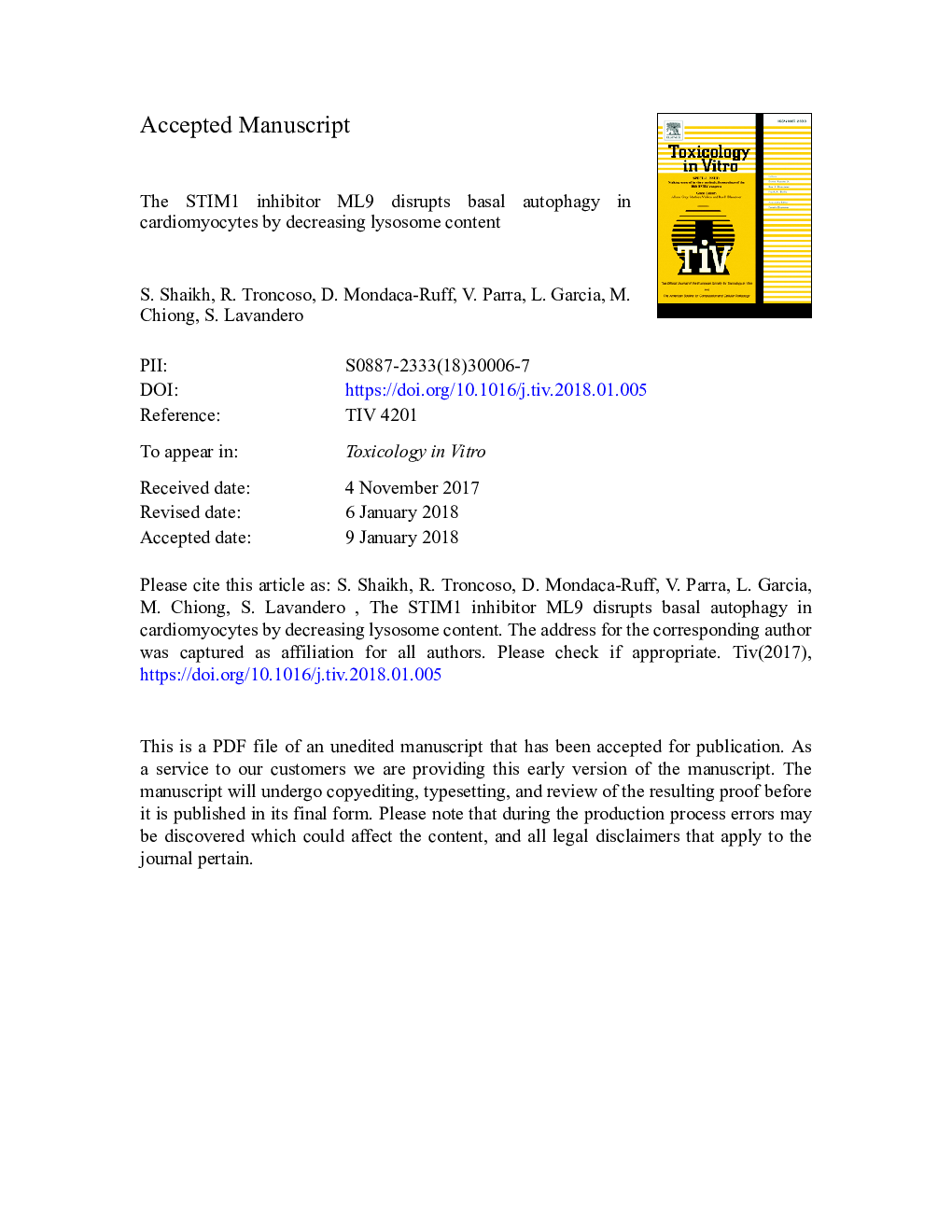| Article ID | Journal | Published Year | Pages | File Type |
|---|---|---|---|---|
| 8553906 | Toxicology in Vitro | 2018 | 27 Pages |
Abstract
Stromal-interaction molecule 1 (STIM1)-mediated store-operated Ca2+ entry (SOCE) plays a key role in mediating cardiomyocyte hypertrophy, both in vitro and in vivo. Moreover, there is growing support for the contribution of SOCE to the Ca2+ overload associated with ischemia/reperfusion injury. Therefore, STIM1 inhibition is proposed as a novel target for controlling both hypertrophy and ischemia/reperfusion-induced Ca2+ overload. Our aim was to evaluate the effect of ML9, a STIM1 inhibitor, on cardiomyocyte viability. ML9 was found to induce cell death in cultured neonatal rat cardiomyocytes. Caspase-3 activation, apoptotic index and release of the necrosis marker lactate dehydrogenase to the extracellular medium were evaluated. ML9-induced cardiomyocyte death was not associated with increased intracellular ROS or decreased ATP levels. Moreover, treatment with ML9 significantly increased levels of the autophagy marker LC3-II, without altering Beclin1 or p62 protein levels. However, treatment with ML9 followed by bafilomycin-A1 did not produce further increases in LC3-II content. Furthermore, treatment with ML9 resulted in decreased LysoTracker® Green staining. Collectively, these data suggest that ML9-induced cardiomyocyte death is triggered by a ML9-dependent disruption of autophagic flux due to lysosomal dysfunction.
Keywords
Related Topics
Life Sciences
Environmental Science
Health, Toxicology and Mutagenesis
Authors
S. Shaikh, R. Troncoso, D. Mondaca-Ruff, V. Parra, L. Garcia, M. Chiong, S. Lavandero,
